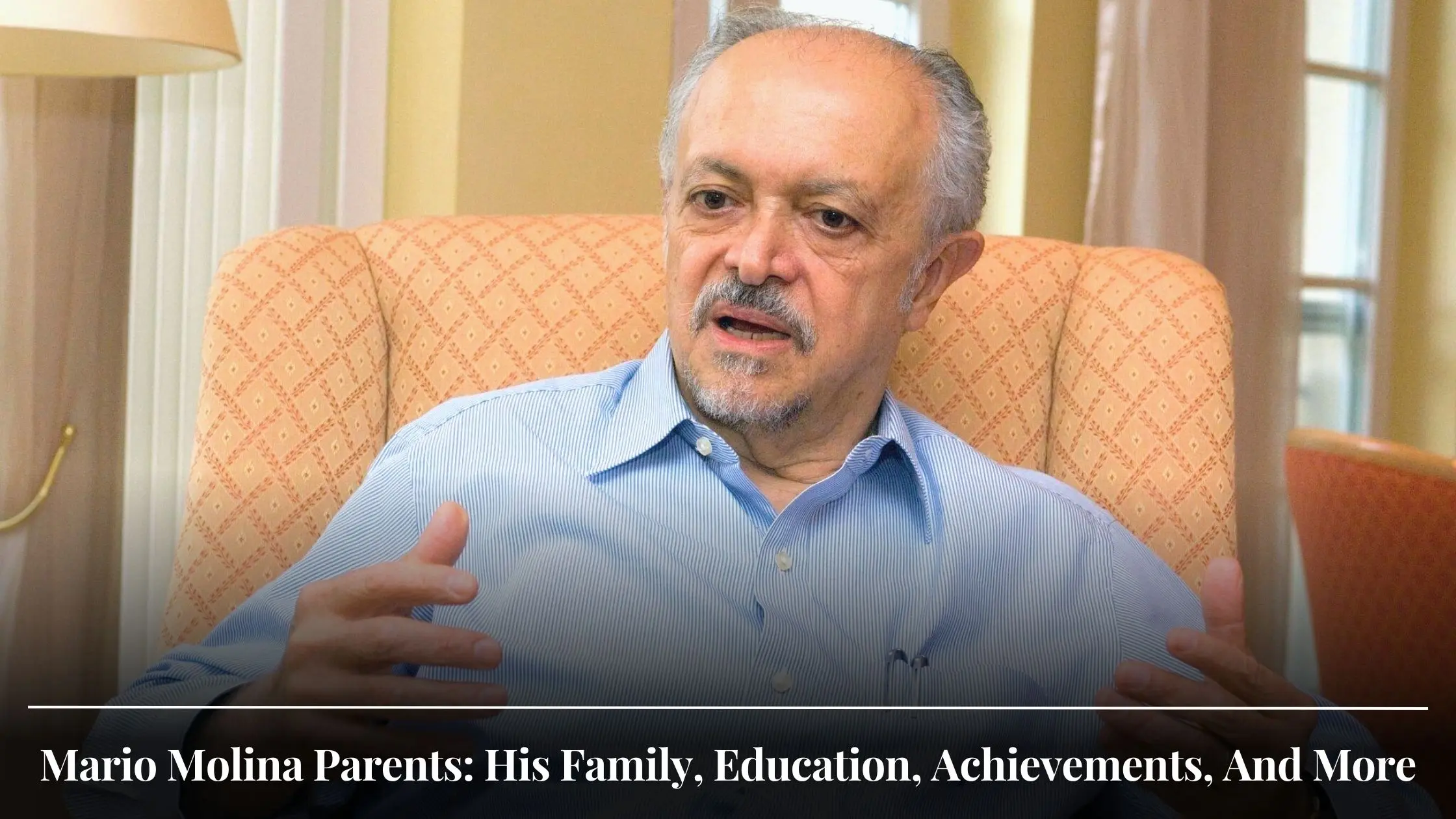Entertainment
Mario Molina Parents: His Family, Education, Achievements, And More

Mario Molina, a native of Mexica, worked as a chemist. He was awarded the Nobel Prize in Chemistry in recognition of his work in environmental chemistry.
Molina has held positions as a professor or researcher at the University of California, Irvine, the California Institute of Technology, the Massachusetts Institute of Technology, the University of California, San Diego, and the Center for Atmospheric Sciences at the Scripps Institution of Oceanography.
In addition, he has worked in the private sector. Molina was also in charge of the Mario Molina Center for Energy and the Environment, which was located in Mexico City.
To Mexican President Enrique Peña Nieto, Molina provided assistance on climate policy. On October 7th, 2020, the National Autonomous University of Mexico released a statement stating that Molina had passed away due to a heart attack.
Mario Molina Parents And Family
Mexico City was the location of his birth when he was welcomed into the world by his parents, Roberto Molina Pasquel and Leonor Henriquez.
In addition to being a lawyer, his father served as an ambassador to the countries of Ethiopia, Australia, and the Philippines.

His mother managed the family’s finances. Mario Molina, whose passions in life were significantly different from those of his parents, is credited with making a seminal discovery in the field of environmental science.
Molina’s aunt Esther, a chemist, encouraged his interest in the scientific world by assisting him with the experiments he performed in a makeshift laboratory he built up in the family bathroom.
In 1973, Mario Molina tied the knot with his first wife, Luisa Tan. Felipe Molina Tan is the couple’s only child. Sadly, they eventually split up.
At the moment, Mario Molina is happily married to his second wife, Guadalupe Alvarez. In 2006, they tied the knot.
Mario Molina Education
Molina’s interest in the scientific world began at a young age. The bulk of Mario Molina’s formal education was completed in Mexico City, which is also where he spent most of his childhood and adolescence.
But, when he was a young teenager, his parents chose to send him to a boarding school in Switzerland rather than a public school so that he could study German and strengthen his scientific ability.
When Mario Molina arrived at the National Autonomous University of Mexico in 1965, he was a young adult and had just turned 18.
After finishing his undergraduate degree in 1968, he moved to the United States in order to continue his education at the University of California, Berkeley, where he earned a doctoral degree.
George Pimentel and Mario Molina worked together on a project while Mario Molina was a student at this institution. In addition to that, he has experience in the field of physical chemistry. In 1972, he graduated with a diploma from this institution.
Life In Atmospheric Chemistry And Chlorofluorocarbons
In 1973, he decided to pursue his education once again and enrolled at the University of California, Irvine. One of his research specializations, while he was a student at this institution, was in the field of atmospheric chemistry and chlorofluorocarbons (CFCs).
Sherry Rowland, who was also a researcher at the company, worked together with Mario Molina on a project. The CFC-Ozone Depletion Theory was developed as a result of the collaborative efforts of the two of them.
This theory proposes that the depletion of the ozone layer on Earth was brought on in part by the production of CFCs and other manmade compounds.

After hypothesizing this, the two people began looking into different ways that CFCs could be removed from the air before they caused any harm to the ozone layer.
After some time, in order to disseminate their findings to other researchers in the field, the two subsequently produced and distributed a pair of scholarly articles on the topic.
The Nobel Prize in Chemistry was awarded to him in 1995 in recognition of his contributions to the identification of chlorofluorocarbon (CFC) chemicals as a threat to the Earth’s ozone layer.
This led to the discovery of the Antarctic ozone hole. He was the first person of Mexican origin to receive the Nobel Prize in Chemistry and the third person of Mexican heritage to win a Nobel Prize overall.
Mario Molina Achievements
Molina’s contributions to the field of chemistry as well as his research into the ozone layer and the atmosphere of the earth have garnered him praise. You can find listed below some of the highest honors that have been bestowed upon him.
Awarded the Nobel Prize in Chemistry in 1989, the NASA Medal for Outstanding Scientific Progress in 1989, the American Chemical Society’s Willard Gibbs Award in 1998, and the Presidential Medal of Freedom in 2013. This 1987 Esselen Prize from the American Chemical Society recognizes Awarded the Nobel Prize in Chemistry in 1989, the NASA Medal for Outstanding Scientific Progress in 1989, and the American Chemical Society’s Willard Gibbs Award in 1998.
Related: Mario Molina Net Worth: How Rich Was The Mexican Nobel Laureate?
Mario Molina is a member of a number of prestigious scientific organizations, including the National Academy of Sciences of the United States, the Mexican Academy of Science, and the American Association for the Advancement of Science.
Mario Molina has been awarded honorary degrees from over a dozen different educational institutions, some of which include Yale, Harvard, the National University of Mexico, Trinity College, the University of British Columbia, and the Complutense of Madrid.
